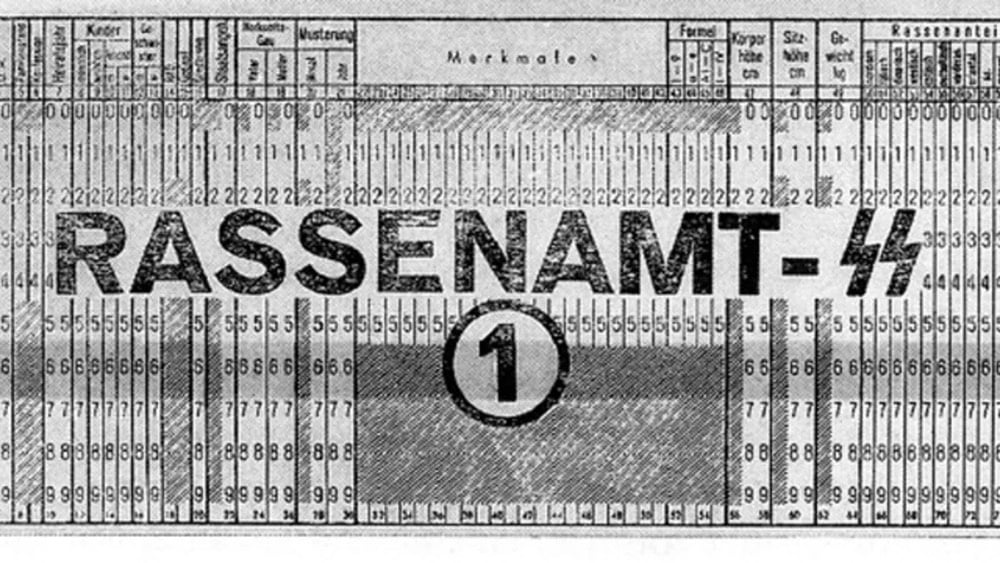How IBM’s Technology Powered the Holocaust

According to a book by human rights journalist Edwin Black, Hitler needed logistical help in carrying out the genocide of Europe’s Jewish population. IBM, an American company whose leadership was obsessed with growth and profits, was happy to provide Hitler with their punch card machines and technology. From The Nazi Party: IBM & “Death’s Calculator” (excerpted from Black’s 2001 book IBM and the Holocaust):
Solipsistic and dazzled by its own swirling universe of technical possibilities, IBM was self-gripped by a special amoral corporate mantra: if it can be done, it should be done. To the blind technocrat, the means were more important than the ends. The destruction of the Jewish people became even less important because the invigorating nature of IBM’s technical achievement was only heightened by the fantastical profits to be made at a time when bread lines stretched across the world.
So how did it work?
When Hitler came to power, a central Nazi goal was to identify and destroy Germany’s 600,000 Jews. To Nazis, Jews were not just those who practiced Judaism, but those of Jewish blood, regardless of their assimilation, intermarriage, religious activity, or even conversion to Christianity. Only after Jews were identified could they be targeted for asset confiscation, ghettoization, deportation, and ultimately extermination. To search generations of communal, church, and governmental records all across Germany — and later throughout Europe — was a cross-indexing task so monumental, it called for a computer. But in 1933, no computer existed.
When the Reich needed to mount a systematic campaign of Jewish economic disenfranchisement and later began the massive movement of European Jews out of their homes and into ghettos, once again, the task was so prodigious it called for a computer. But in 1933, no computer existed. When the Final Solution sought to efficiently transport Jews out of European ghettos along railroad lines and into death camps, with timing so precise the victims were able to walk right out of the boxcar and into a waiting gas chamber, the coordination was so complex a task, this too called for a computer. But in 1933, no computer existed.
However, another invention did exist: the IBM punch card and card sorting system — a precursor to the computer. IBM, primarily through its German subsidiary, made Hitler’s program of Jewish destruction a technologic mission the company pursued with chilling success. IBM Germany, using its own staff and equipment, designed, executed, and supplied the indispensable technologic assistance Hitler’s Third Reich needed to accomplish what had never been done before — the automation of human destruction. More than 2,000 such multi-machine sets were dispatched throughout Germany, and thousands more throughout German-dominated Europe. Card sorting operations were established in every major concentration camp. People were moved from place to place, systematically worked to death, and their remains cataloged with icy automation.
IBM Germany, known in those days as Deutsche Hollerith Maschinen Gesellschaft, or Dehomag, did not simply sell the Reich machines and then walk away. IBM’s subsidiary, with the knowledge of its New York headquarters, enthusiastically custom-designed the complex devices and specialized applications as an official corporate undertaking. Dehomag’s top management was comprised of openly rabid Nazis who were arrested after the war for their Party affiliation. IBM NY always understood — from the outset in 1933 — that it was courting and doing business with the upper echelon of the Nazi Party. The company leveraged its Nazi Party connections to continuously enhance its business relationship with Hitler’s Reich, in Germany and throughout Nazi-dominated Europe.
It’s not difficult to see the relevance of this episode today. Should Microsoft-owned GitHub provide software to ICE for possible use in the agency’s state-sanctioned persecution of immigrants and asylum seekers? Should Twitter allow Donald Trump to incite terrorism on their service? Should Google provide AI to the Pentagon for the potential development of deadlier weapons? And Christ, where do you even start with Facebook? Palantir, Apple, and Amazon have also been criticized recently for allowing unethical usage of their technology and platforms. “It’s just business” and the belief in the neutrality of technology (and technology platforms) have combined to produce a shield that contemporary companies use to protect themselves from activists’ ethical criticisms. And increasingly, the customers and employees of these companies aren’t buying it because they don’t want history to repeat itself. (via marc hedlund)





Stay Connected